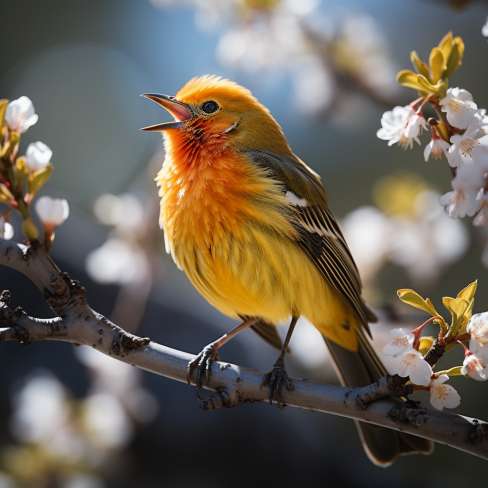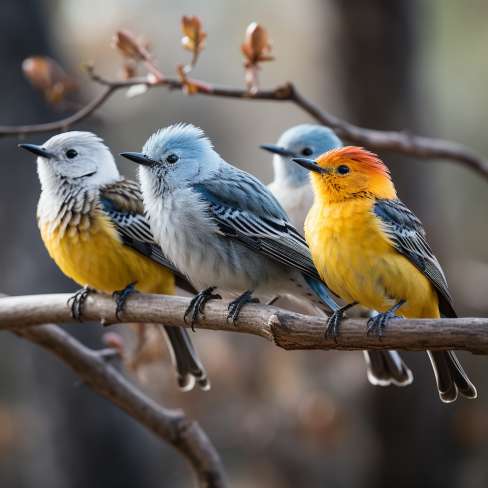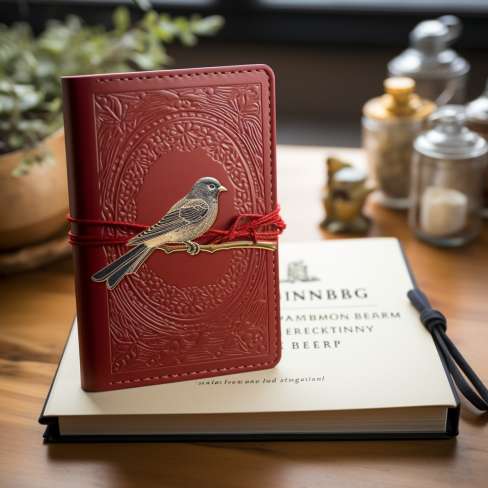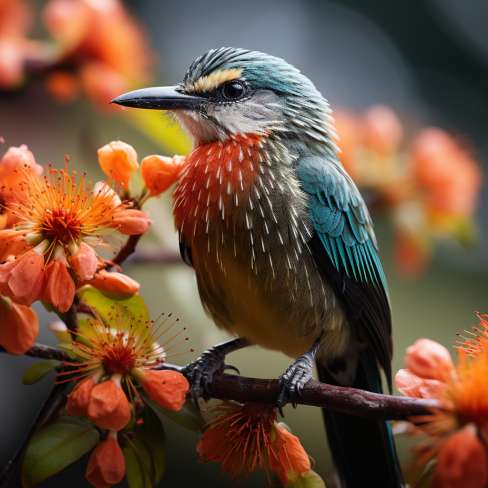Bird Identification Made Easy: How to Identify Different Species
Birdwatching is a delightful hobby that connects us to the natural world. The joy of observing various bird species in their natural habitats can be a truly enriching experience. However, one of the key challenges for birdwatchers, especially beginners, is identifying different bird species accurately.
In this guide, I will dive deep into the art of bird identification and explore essential tips and tricks that will make the process easy, enjoyable, and rewarding. Let’s spread our wings and embark on this thrilling journey of discovery!
Bird Identification Made Easy: How to Identify Different Species?
One of the fundamental aspects of bird identification is studying their plumage and morphology. Different bird species exhibit unique color patterns, markings, and physical characteristics that aid in their identification.
Observing features such as beak shape, wing size, tail length, and leg color can provide crucial clues to the bird’s identity.
Also Read: Discovering Bird Anatomy
Identifying Birdsongs and Calls: Listening for Distinctive Melodies

Birds are known for their melodious songs and distinct calls. Learning to identify birds by their vocalizations is an invaluable skill for birdwatchers. Each species has its own song, and recognizing these calls can help you pinpoint the presence of specific birds even when they are hidden from view.
Habitat and Range: Decoding Bird Preferences
Birds are highly adaptive creatures, and they occupy a wide range of habitats, from forests and grasslands to wetlands and urban areas. Understanding a bird’s preferred habitat and range can significantly narrow down the possibilities for identification. This knowledge will increase your chances of spotting particular species in their natural habitats.
Migration Patterns: Following the Seasonal Travelers
Many bird species are migratory, traveling thousands of miles each year to reach their breeding and wintering grounds. Recognizing migration patterns can be a valuable clue in identifying birds during specific times of the year. Understanding when and where certain birds migrate can enhance your birdwatching adventures.
Field Guide Essentials: Your Portable Bird Identification Bible

Investing in a quality field guide is a must for any aspiring birdwatcher. These comprehensive books are filled with detailed information, illustrations, and photographs of various bird species. Always carry a reliable field guide with you on your birdwatching excursions, as it will be your go-to resource for identifying unfamiliar birds.
The Power of Binoculars: Zooming in for Details
Binoculars are a birdwatcher’s best friend. These optical wonders allow you to view birds from a distance without disturbing them. With binoculars, you can examine plumage details, facial markings, and other characteristics that are crucial for accurate identification.
Also Read: The Joy of Feeding Birds
Photography for Documentation: Capturing the Moment
Photography is not only a fantastic way to document your birdwatching experiences but also an essential tool for identification. Taking clear photographs of birds you encounter will enable you to review the images later and compare them to reference materials, aiding in the identification process.
Keeping a Birdwatching Journal: Recording Your Observations

Maintaining a birdwatching journal is a cherished tradition among birdwatchers. This personalized log allows you to record the date, location, weather conditions, and bird species you encountered. Over time, your journal becomes a treasure trove of memories and a valuable resource for tracking your birdwatching progress.
Birding Hotspots: Exploring Prime Birdwatching Locations
Discovering prime birdwatching locations, often referred to as “birding hotspots,” can dramatically increase your chances of encountering a diverse array of bird species. These locations are renowned for their rich biodiversity and attract birdwatchers from all around the world.
Using Technology: Bird Identification Apps and Websites
In the digital age, technology has revolutionized birdwatching. Numerous bird identification apps and websites are available, allowing you to identify birds on the spot. Simply snap a photo or record their song, and the app or website will provide you with potential matches.
Understanding Bird Behavior: Identifying Through Actions
Bird behavior can offer valuable insights into their identity. Observing how birds fly, feed, and interact with their surroundings can provide essential clues for identification. For example, certain species have distinctive flight patterns or feeding behaviors that set them apart from others.
Binocular Etiquette: Respecting Birds and Fellow Birdwatchers
When engaging in birdwatching, it’s vital to practice binocular etiquette. Respecting the birds and their habitats, as well as fellow birdwatchers, ensures a positive and ethical birdwatching experience for everyone.
The Beauty of Endemic Species: Uniqueness in Specific Regions

Endemic species are birds that are native to specific regions and found nowhere else in the world. Exploring the beauty of these unique birds can be a highlight of any birdwatching journey. Researching and identifying endemic species add a sense of adventure to your birdwatching expeditions.
Understanding Bird Taxonomy: Classifying the Avian World
Bird taxonomy is the science of classifying birds into various groups based on their evolutionary relationships. Learning about taxonomic categories such as families, genera, and species can deepen your understanding of the avian world.
Challenges of Bird Identification: Look-Alikes and Hybrids
While bird identification can be a thrilling pursuit, it comes with its challenges. Some bird species closely resemble each other, leading to potential confusion. Additionally, hybrids, which result from the interbreeding of two different species, can further complicate identification.
FAQs
Can I identify birds by their songs alone?
Yes, many bird species have distinctive songs and calls, making it possible to identify them even without visual confirmation.
What is the best time of day for birdwatching?
Early mornings and late afternoons are ideal for birdwatching as birds are most active during these times.
Are birdwatching apps accurate in identification?
Birdwatching apps have improved significantly and can provide accurate identifications, but it’s essential to double-check with field guides or experts for confirmation.
How can I attract more birds to my backyard?
You can attract birds by providing feeders, birdhouses, water sources, and native plants that offer food and shelter.
Do I need expensive equipment to start birdwatching?
While high-quality binoculars and field guides are beneficial, you can begin birdwatching with basic equipment and gradually upgrade as you gain experience.
What should I do if I find an injured bird?
If you encounter an injured bird, contact your local wildlife rehabilitation center or animal rescue organization for assistance.
Conclusion
Birdwatching is a delightful pursuit that brings us closer to the natural world and fosters an appreciation for avian diversity. By mastering the art of bird identification, you can unlock a whole new realm of enjoyment in your birdwatching adventures. Embrace the wonder of birds, and let your passion take flight as you continue to explore and discover the beauty of different bird species.
Remember, bird identification is a skill that develops over time, so don’t be discouraged by initial challenges. As you spend more time observing and learning about these magnificent creatures, your expertise and confidence will soar. So, grab your binoculars, open your field guide, and embark on a journey of birdwatching bliss!




